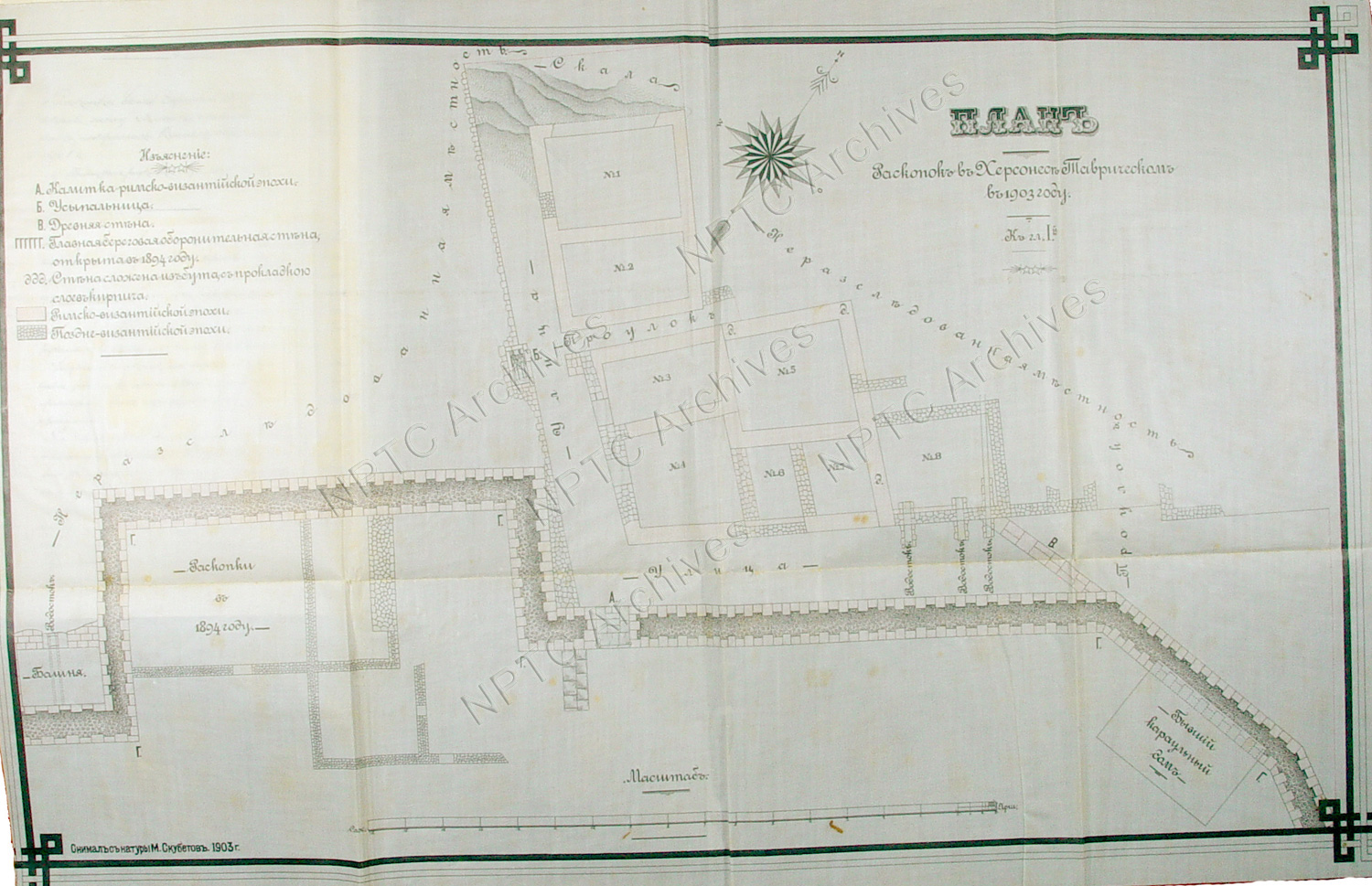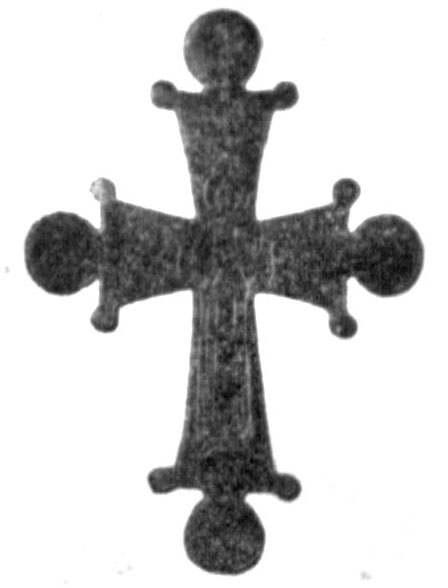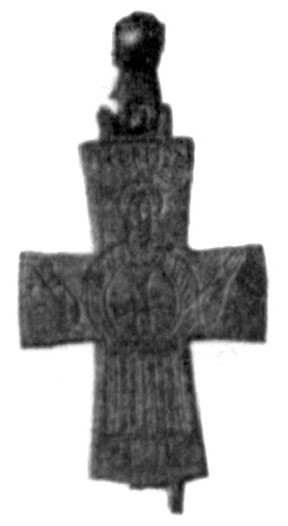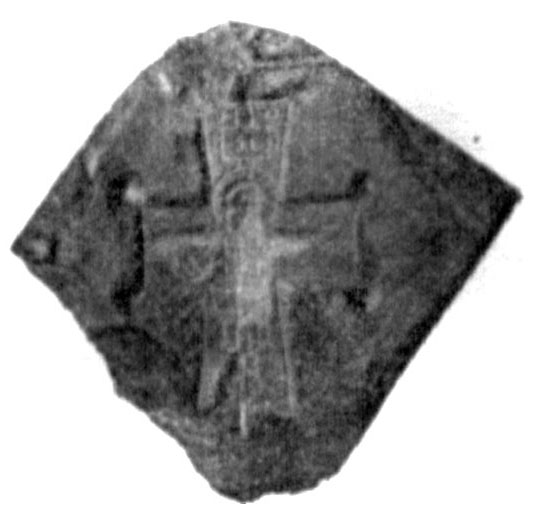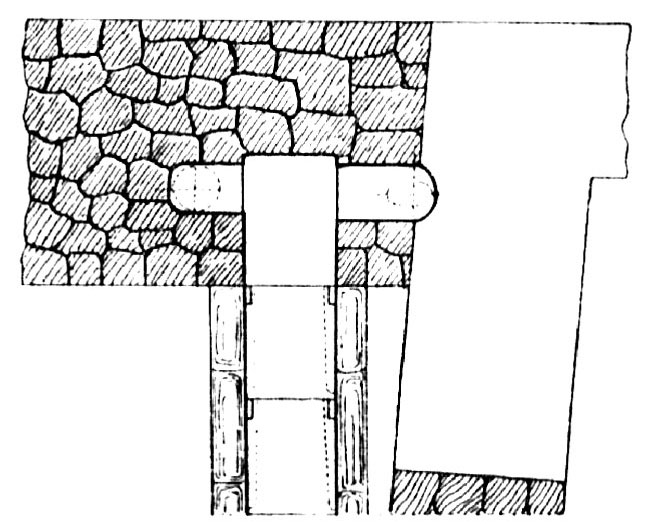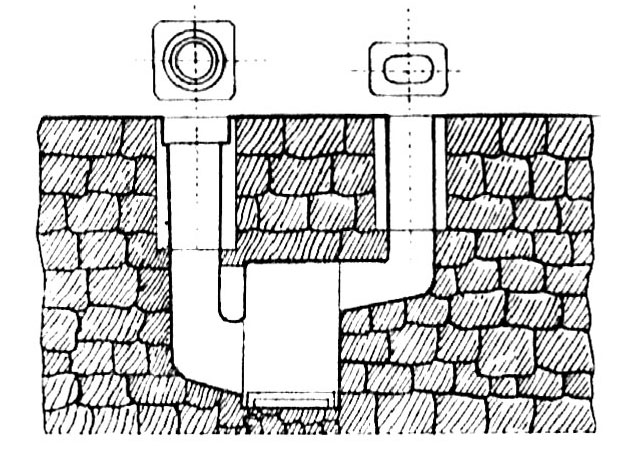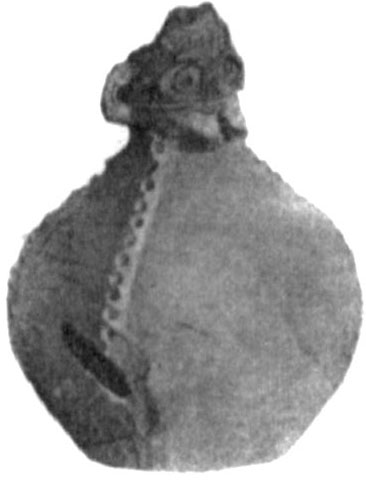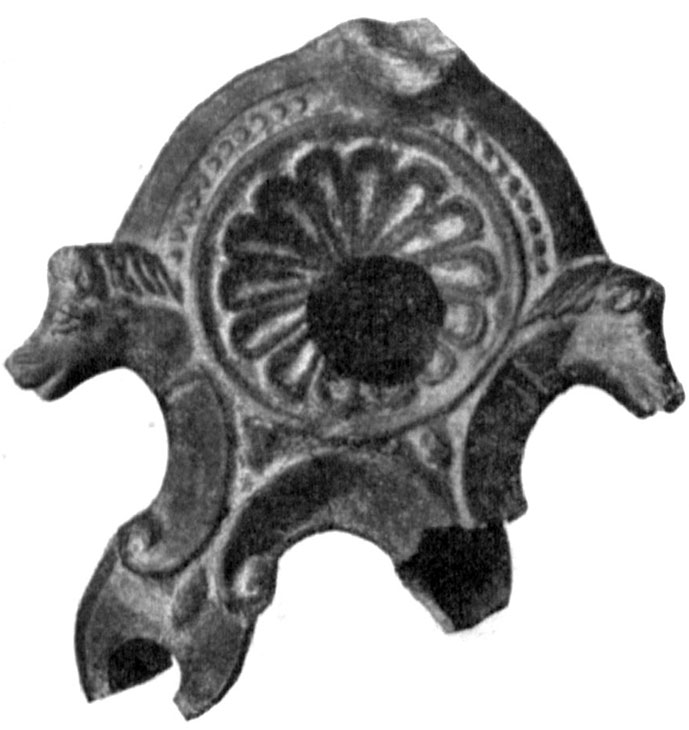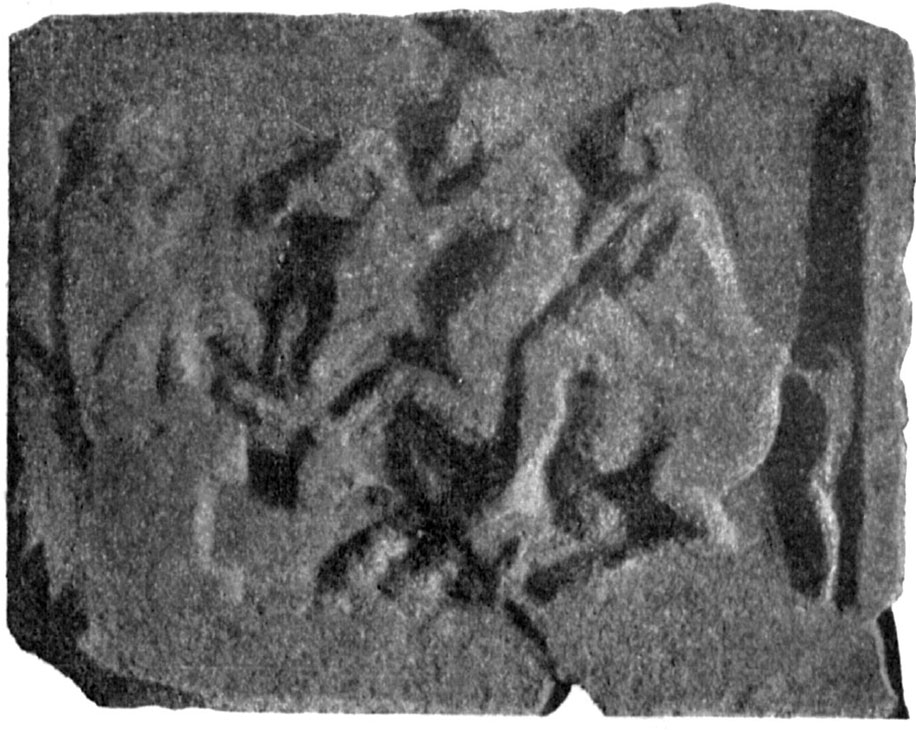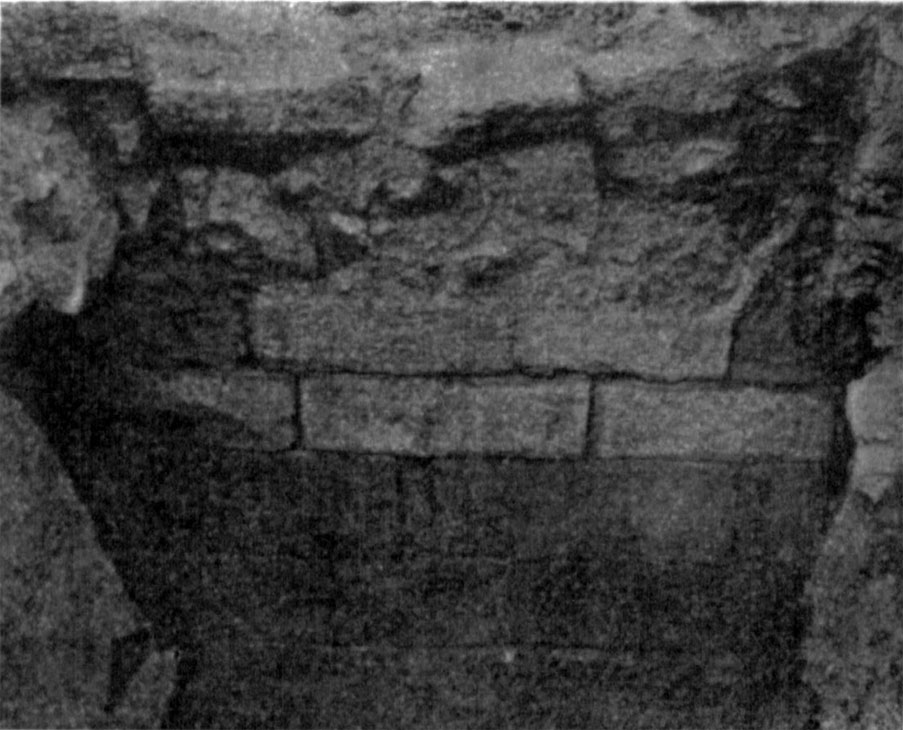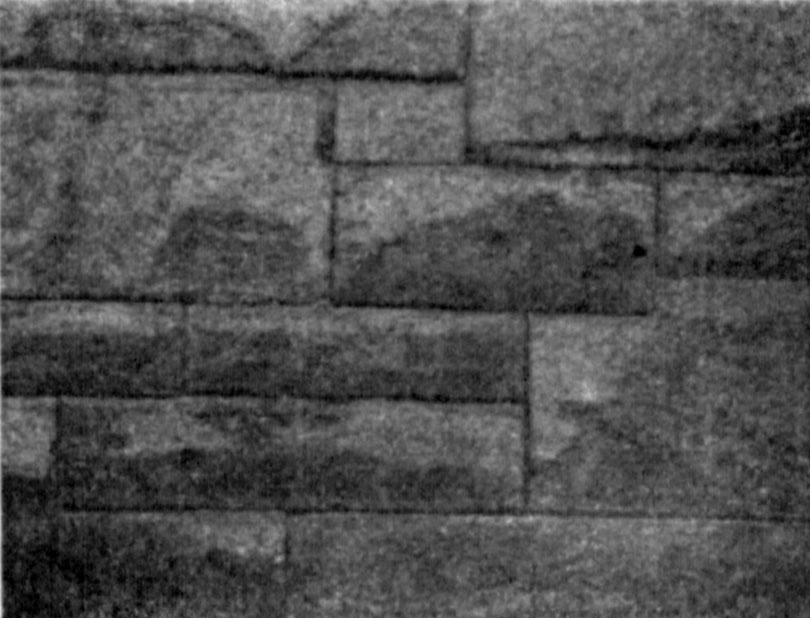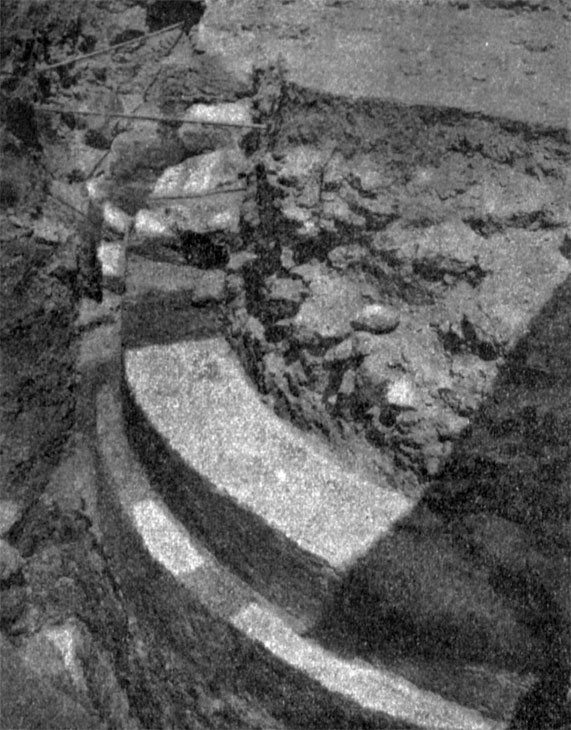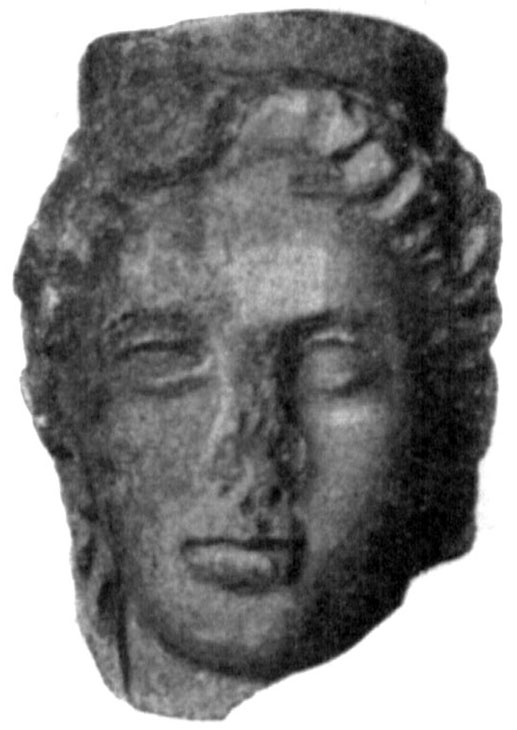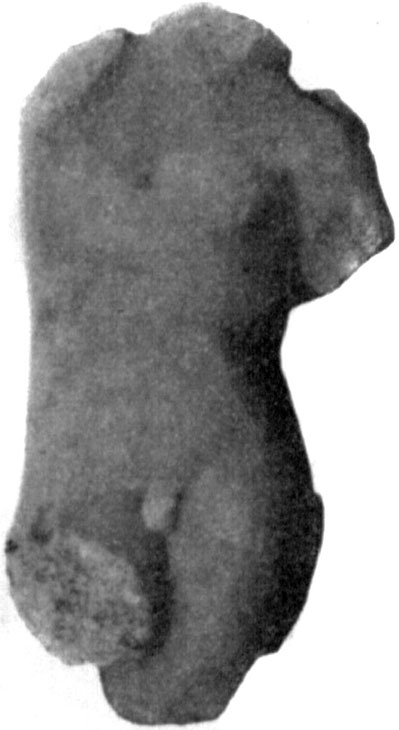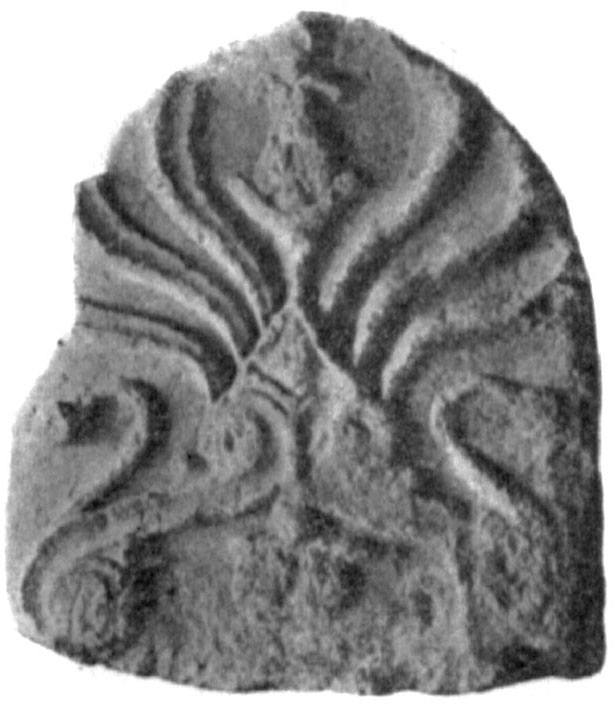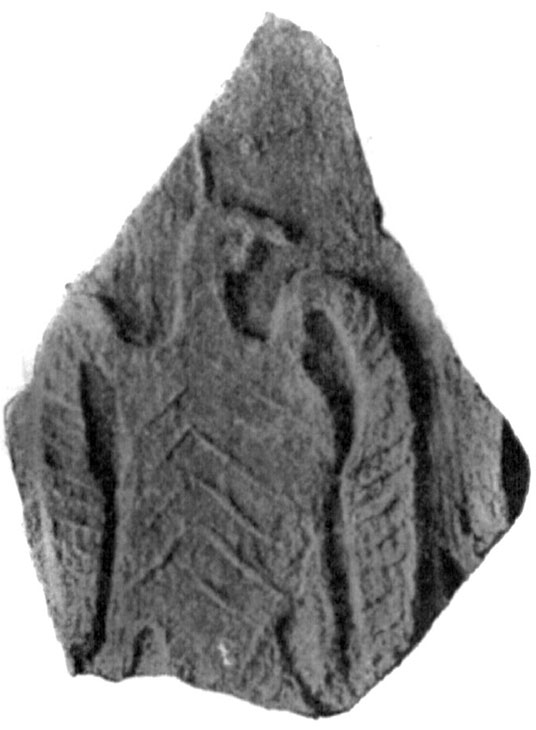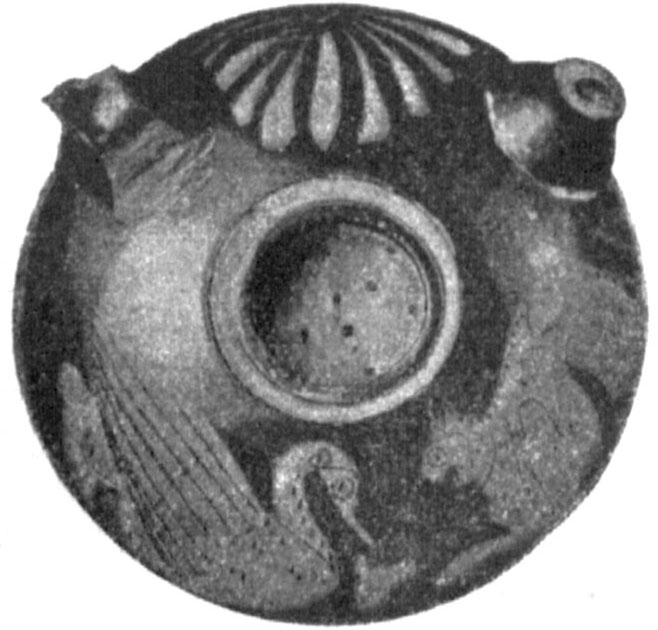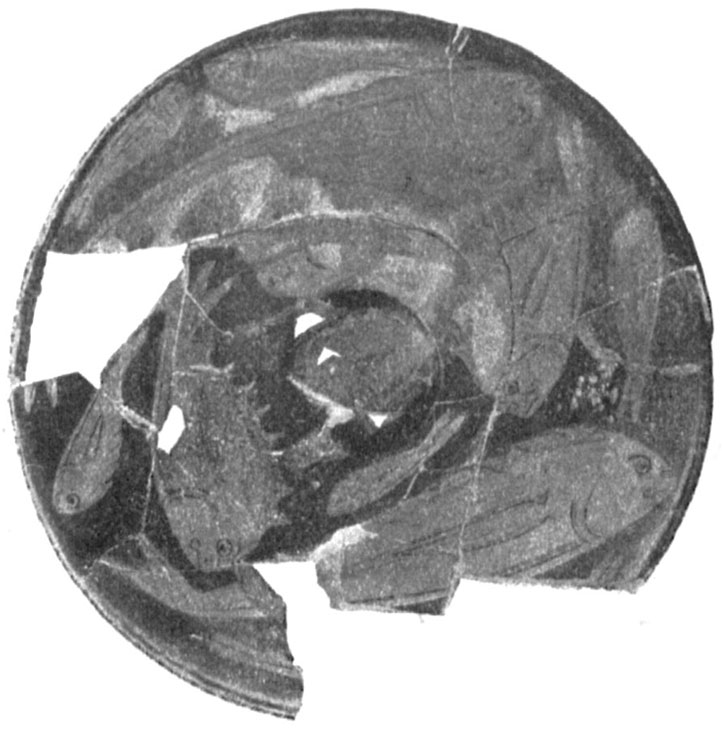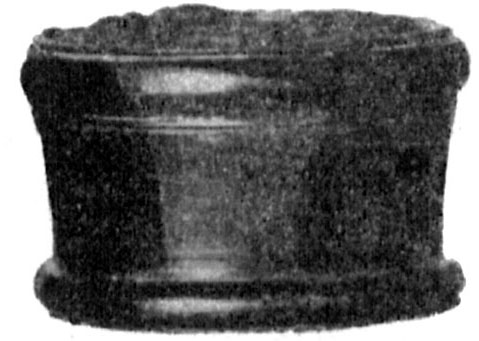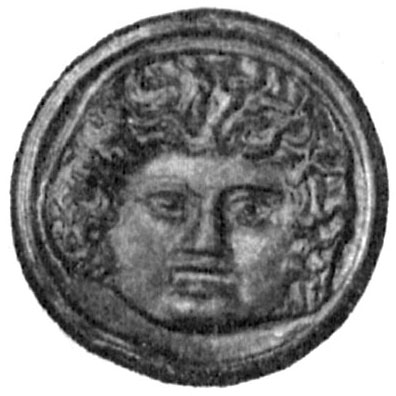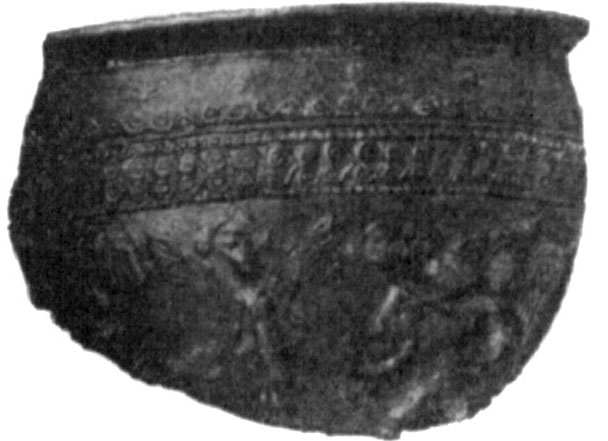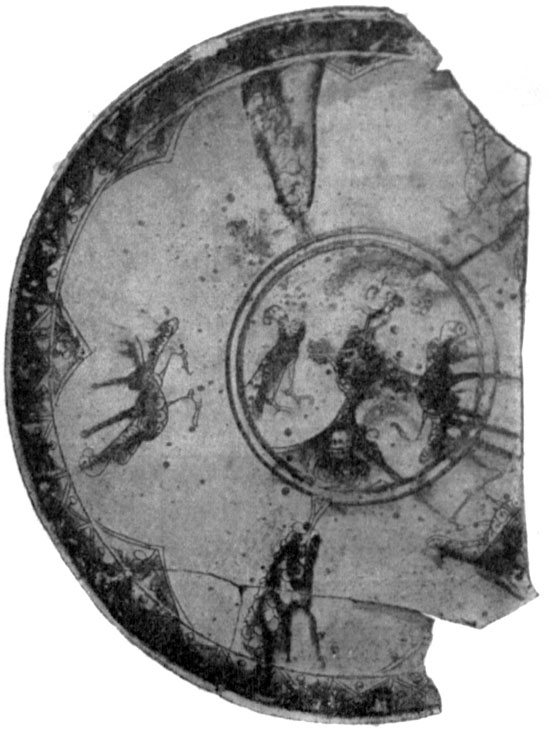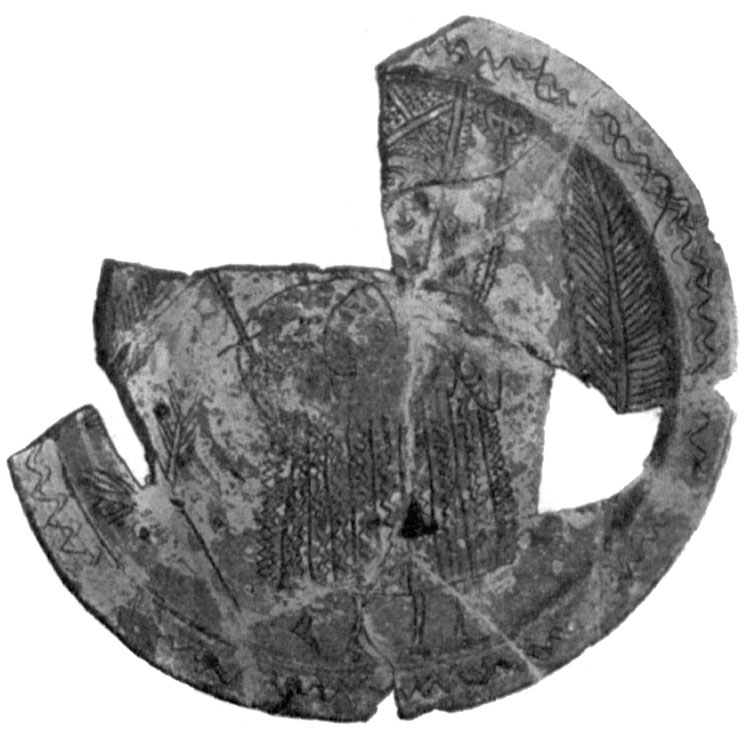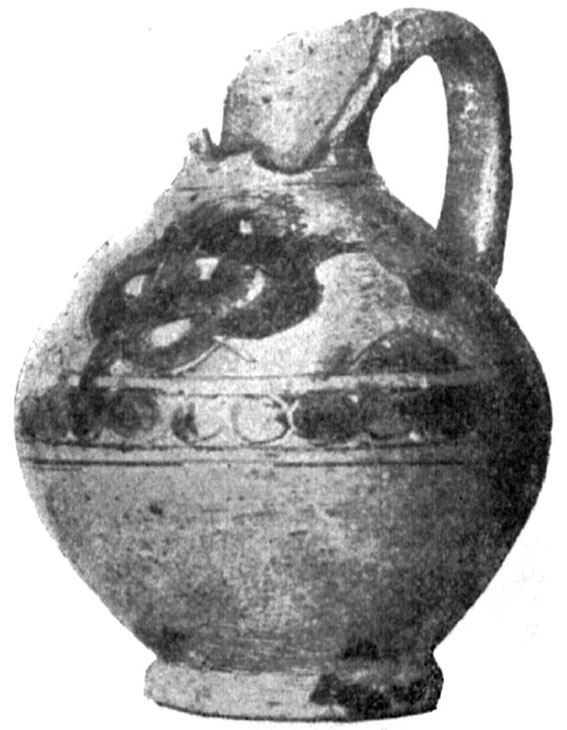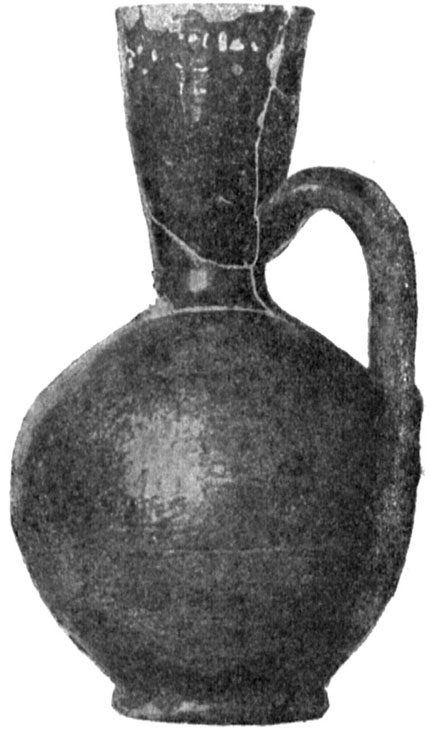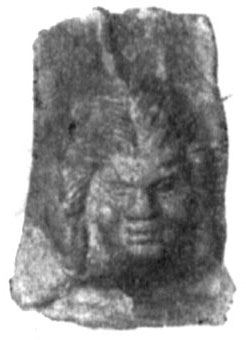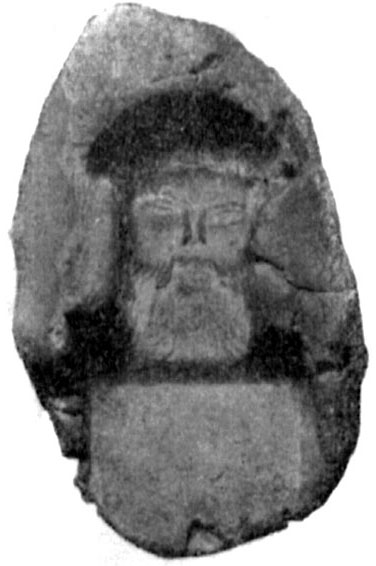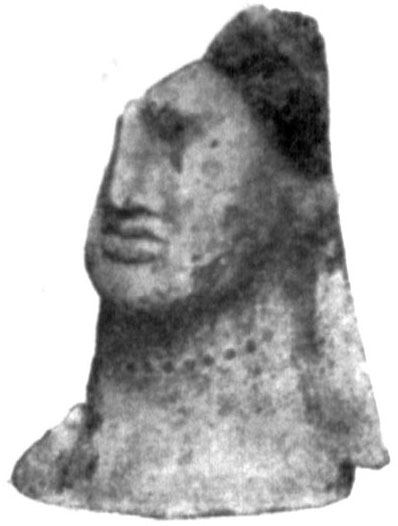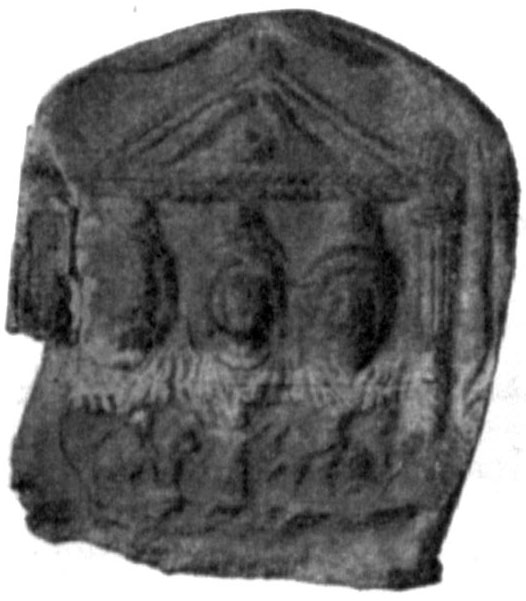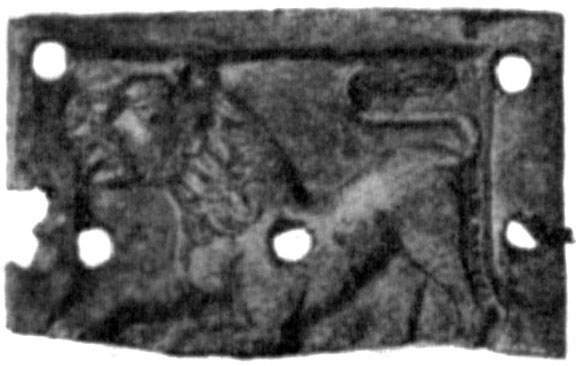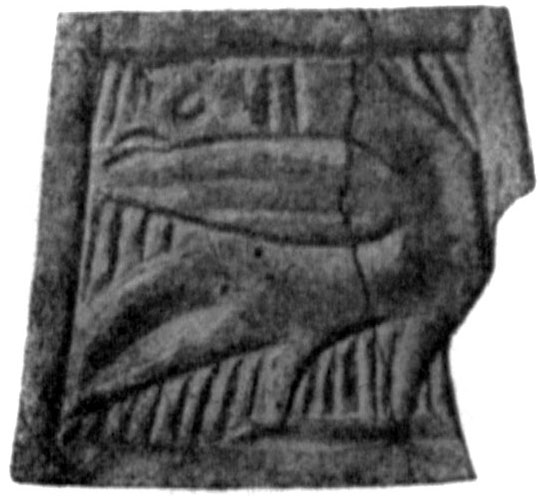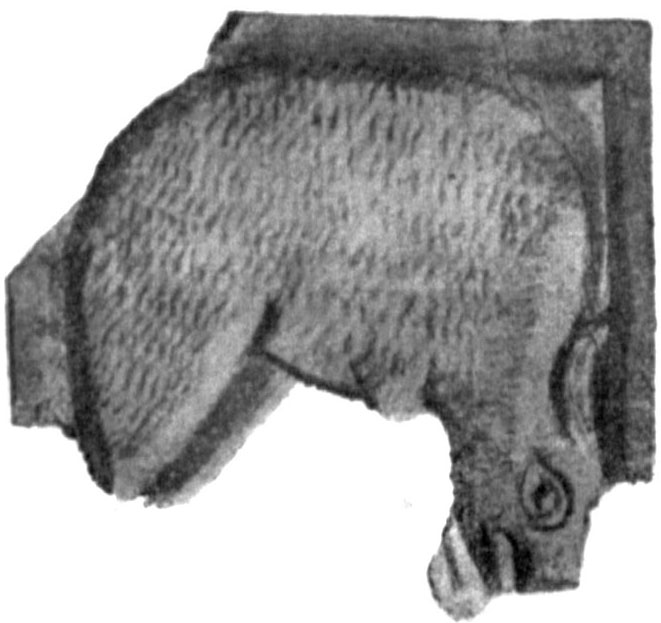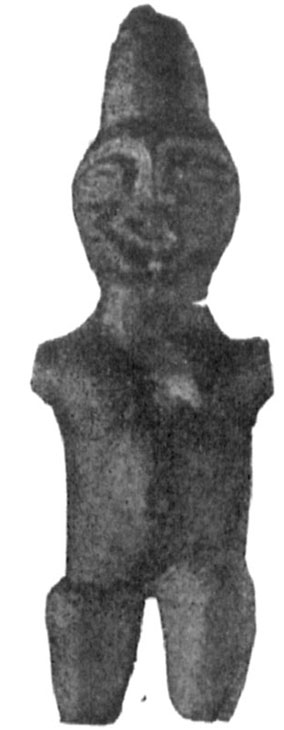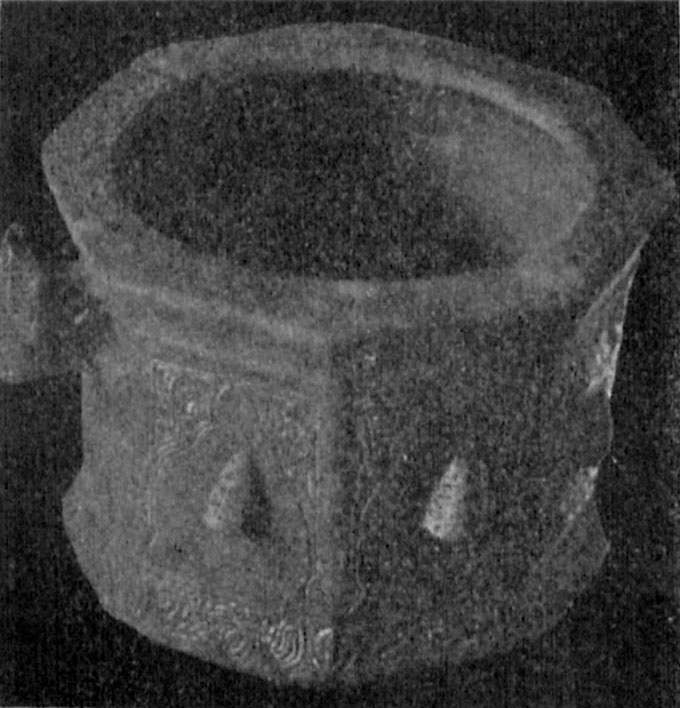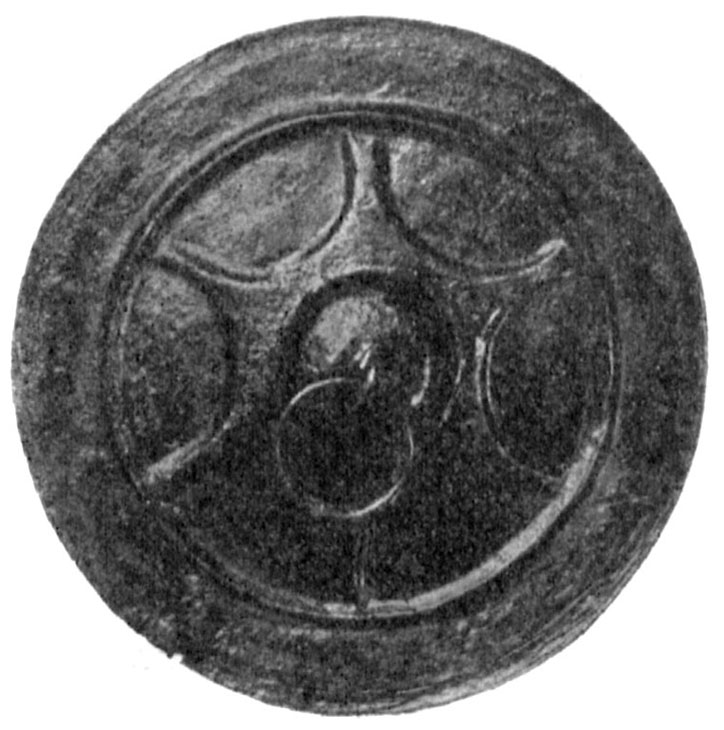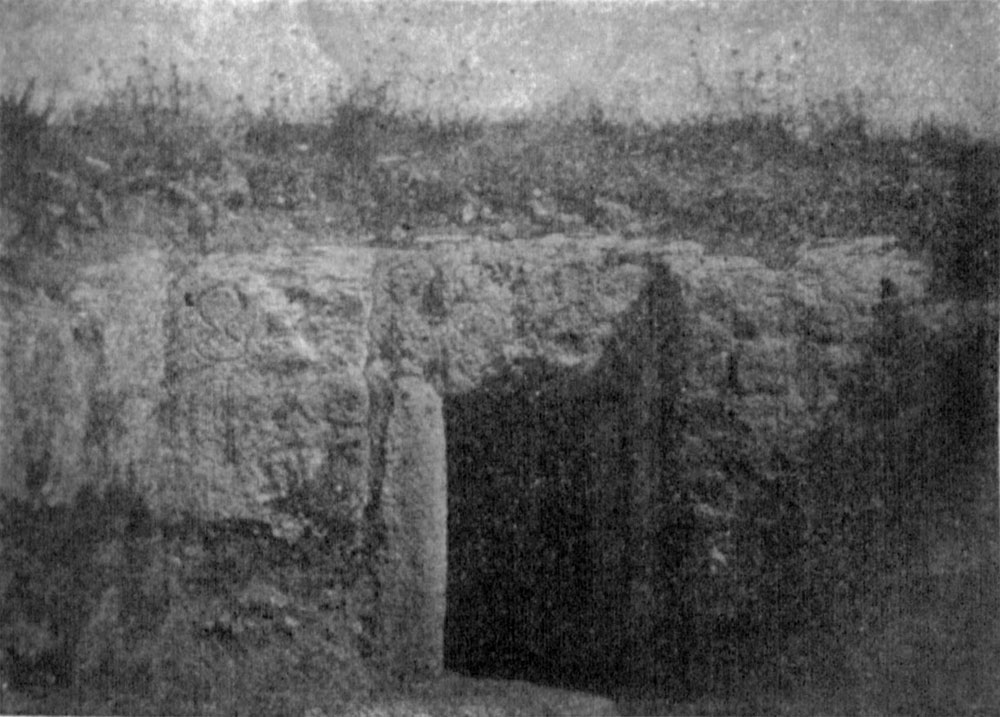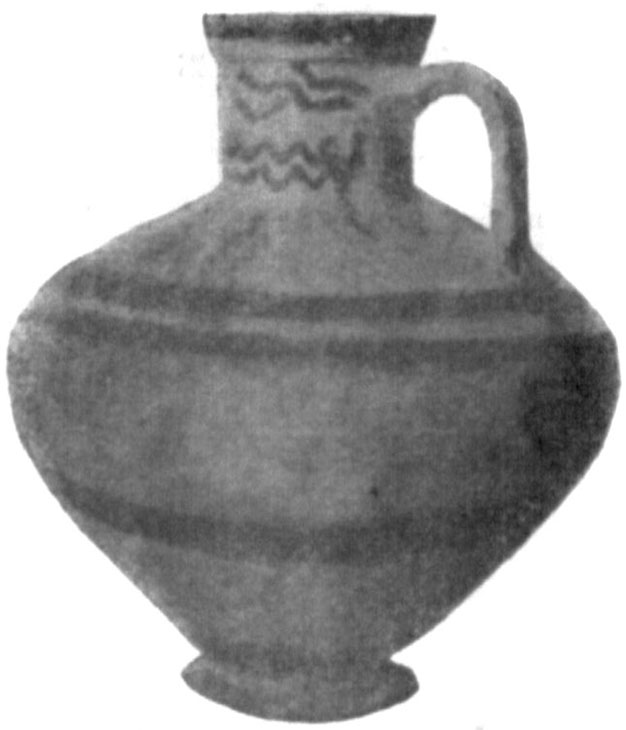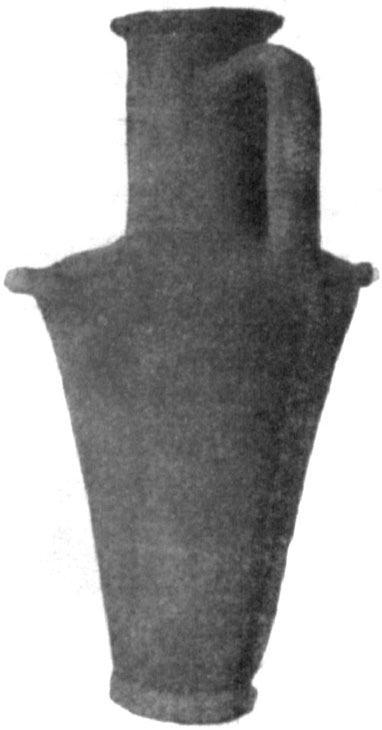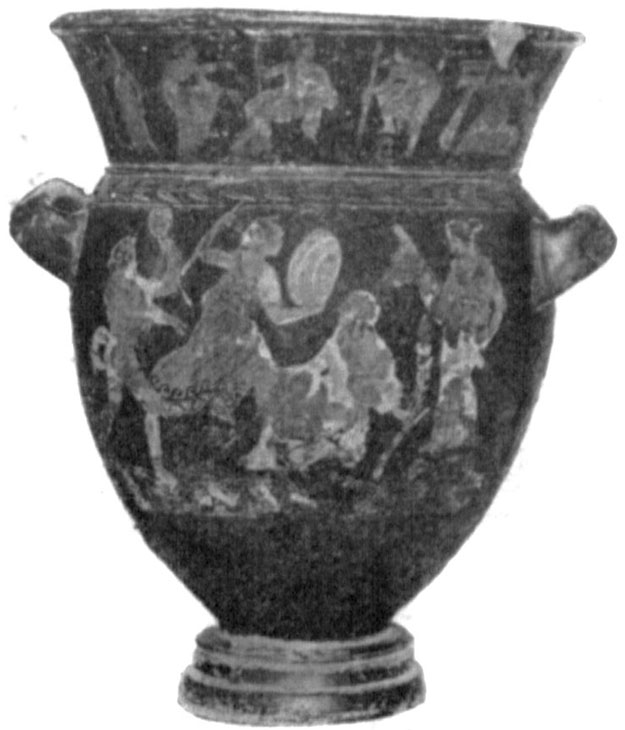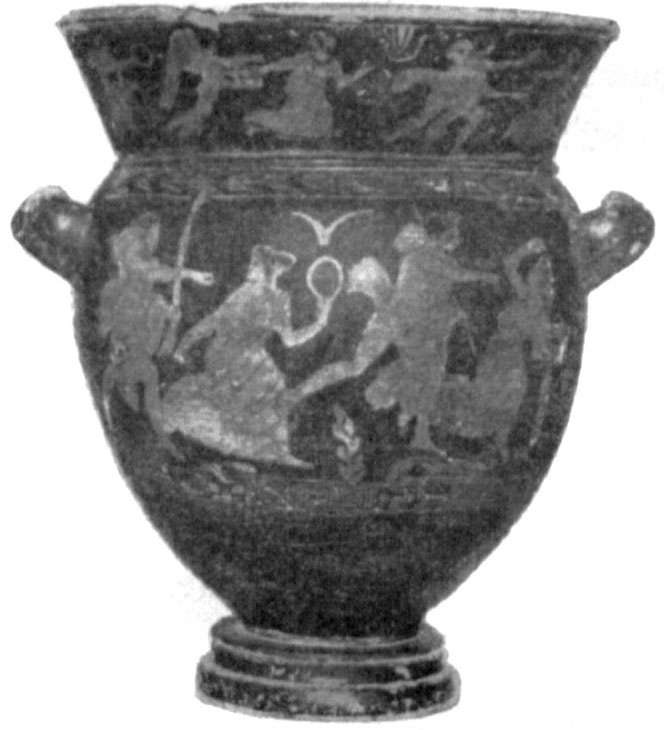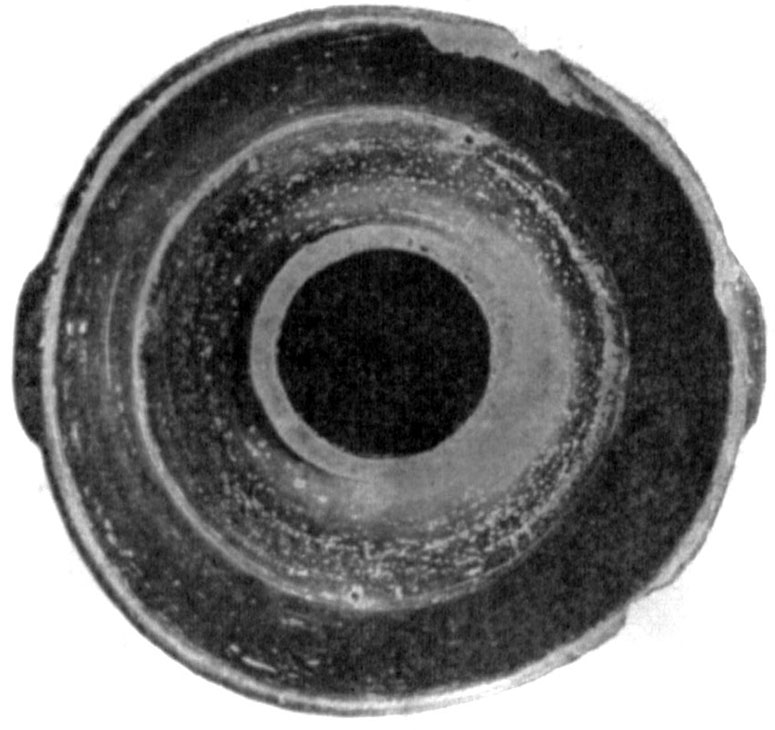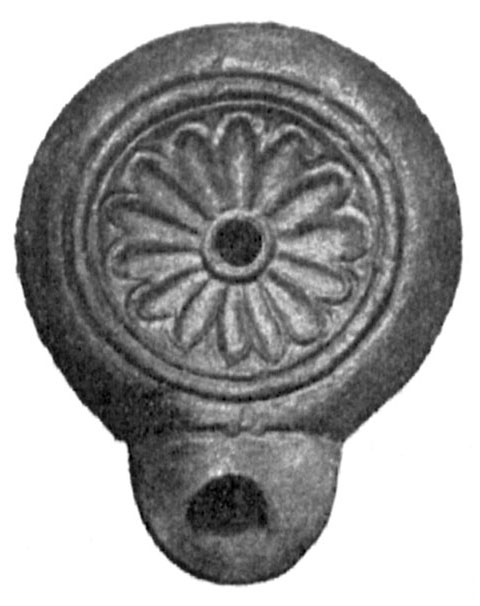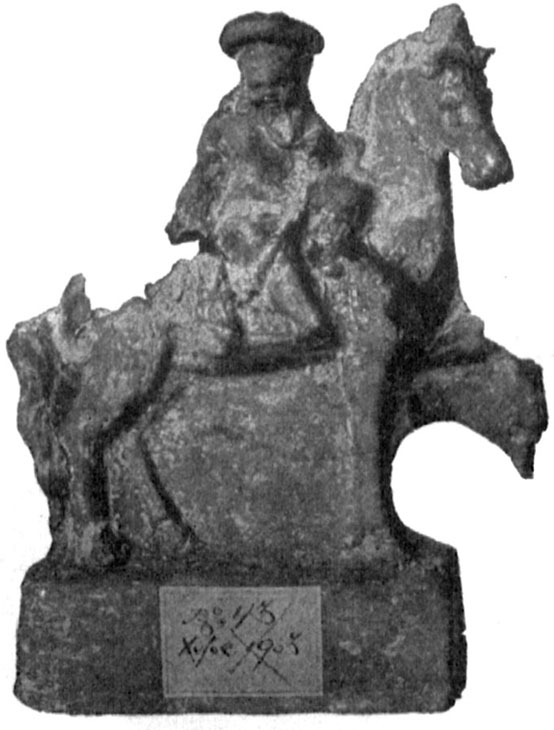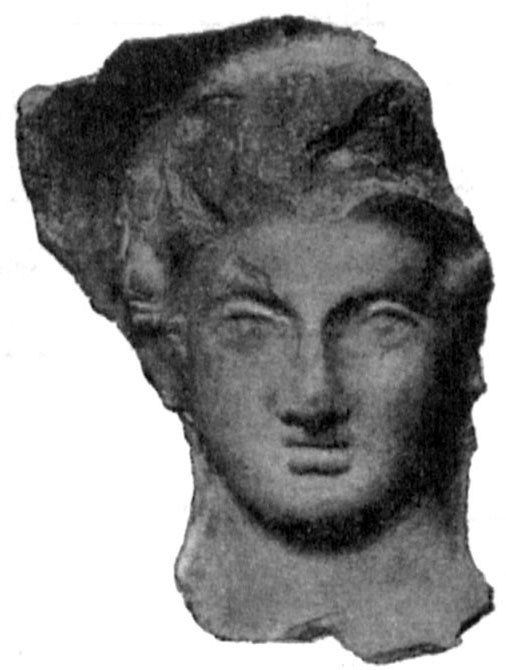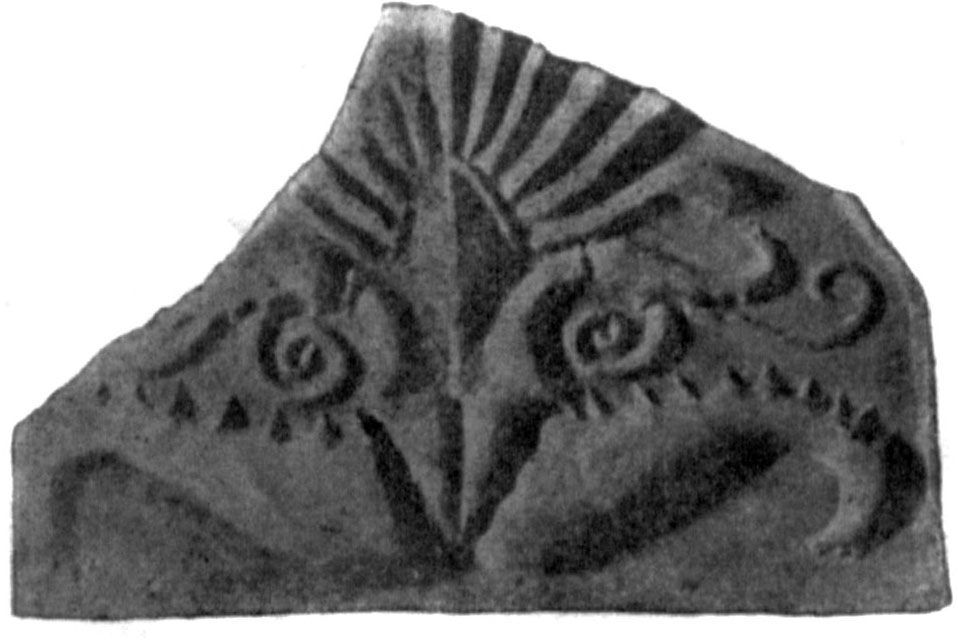 |
 |
 |
|
||
| main :: biography :: texts :: manuscripts :: photographs :: drawings :: squeezes :: publications :: about | ||
|
1903 REPORT OF THE HEAD OF THE EXCAVATIONS IN CHERSONESOS MR K. K. KOSTSYUSHKO-VALYUZHINICH Excavations in Chersonesos
In Chersonesos, the member of the <Archaeological> Commission K.K.Kostsyushko-Valyuzhinich has investigated in the year under report:
1. In the first of the above-mentioned areas (plan is on Fig. 17) , the excavations were made on the north and south side of the coastal city wall, which had been discovered in 1894. To the south of it, only Romano-Byzantine layer was removed. On the north side of it, the excavation reached bedrock. There were remains of buildings of three different periods. The most part of the foundations dates to the Romano-Byzantine period. These remains of urban buildings are indicated on the plan (Fig. 17) by numbers 1-8. Some of these buildings were repaired and remodeled in the Latest Byzantine period; such renovations were fixed for rooms nos. 3, 4, 6 and 8. Stonework in the west wall of room no. 1 and walls to the north-east from rooms nos. 2, 5, 8 and to the west from postern А also date to the Late Byzantine period. Although the walls of the latest period are made of rough stone with mud, more ancient walls of the Romano-Byzantine period are laid of ashlars with lime. Most likely rooms nos.1-8 were basement stories of the houses in seaside quarters of Chersonesos. There is a masonry of cube-shaped stones with solid lime mortar alternating with brickwork (four bricks in a coarse), located in wall д—д, at a considerable height. The most part of other walls in rooms nos. 1-5 and 7 is distinguished by great thickness and is laid with lime. Three rooms only (nos. 1, 3 are 4) were supplied with doors; it is likely that the other rooms were entered only from the rooms located above basements. The described rooms overlooked two streets. The first street starts at postern А in the city wall, it went to the city up the slope , in north-western direction, the second street went along city wall Г, in eastern direction. Postern А kept stone doorstep in situ with survived abutment aimed to rotate the door. Rooms 1-8 date to the same period as the wall, which was located on the other side of the street and went from postern А to the north-west. Only that part of this wall, which adjoins the city walls, is a reconstruction of the Late Byzantine period. Excellently preserved tomb Б has been uncovered 12.85 m far from postern А, on the left side, on the north street, in a small projection of the wall; it dates to the same period as well. This tomb is a rectangular box (1.95 х 0.80 х 1.78 m) laid of stone slabs with lime. The floor of the tomb is formed by three slabs and contained 8 holes, probably to remove water. There were 8 skeletons uncovered in the tomb: 1 of an aged person, 6 of adults, and 1 of a child. Top skeleton of a young man was buried into a wooden coffin, only a fragment of which board and 4 iron nails survived. There were fragments of silk cloth adhered to the skull of the skeleton; below, this cloth was trimmed with a band woven of gold and blue threads composing checkered pattern; the excavation uncovered also a wooden comb accompanying the skeleton. Among the other artifacts excavated from the tomb, especially interesting are pieces of silk woven belt with images of standing human figure, lion, rooster, and ornamental motives [1] . Apart from two streets described above, there were two small side-streets more located in the excavated area: one between rooms nos. 2 and 3, another to the east of room no. 8. The excavations near this room and tower Д uncovered drain gutters (в) dating to the Romano-Byzantine period, that is to say, to the period when the quarter investigated in 1903 was mainly constructed. Close to the city wall Г , there was a section of more ancient city wall, on top of which the later wall stood. 1903 excavations have not finished the investigation of more ancient wall. Among the ancient artifacts excavated from the area near the city wall Г, the most interesting are the following [2] . Amidst the epigraphic monuments, there is a fragment of pedimented stele with relief ornamentation and decree from the Roman period, inscribed below [3] . A part of the discovered coins dates to the Greek period of Chersonesos (17 pieces), a part to the Roman period (21), and a part to the Byzantine period, from Justinian I to Basil II and Constantine XI (396). Besides that, there were 11 coins of different colonies in Euxeinos Pontos, 432 coins of Roman and Byzantine emperors, 17 coins of khans of the Crimea and the Golden Horde, 3 from West Europe; some coins could not be attributed due to bad state of their preservation. Besides coins, the finds include three Byzantine molybdoboulloi. Then, there is an interesting top fragment of a small altar [4] , decorated with relief cornice and figures (top of a figure of man survived). Among the architectonic fragments, we should call your attention to a fragment of fluted column of limestone, terracotta rosette with relief head that was pedimental decoration, fragments of thick glasses, and square floor bricks. The other finds include bronze cup, scoop, key, buckles, fine close bells, buttons, thimbles, finger-ring with carved image of a horse, needles for knitting fishing nets, fishhooks, arrowheads, paten, fragment of thin wire icon lamp chain, bone thimble, awl, checkers, dotted die, knucklebones, wild boar’s fangs, fragments of goat’s and deer’s horns, which were used for making different goods, shards of black-slip and red-slip vases, shards of red-slip, glazed, and simple earthenware vessels, shards of Roman clay lamps, various beads, shards of glass bracelets, circular glasses for finger-rings, iron nails, earthenware plates, sinkers, spindle whorls, stone millstone, grindstones, paint grinders, flint end scraper, throwing stones, hard stone mould for casting metal rings, lead sinkers, fragments of red paint in amphora. 2. Within the monastery wall, at place of the ancient acropolis, the excavations removed a hill, 6.40 m high in the middle, which was located to the north of the fence of the Greek-cross plan church excavated in 1897. The hill was limited with the ancient streets on the north-east and north-west; modern fence goes above the foundation of their wall. The excavations of the top layer of the hill have uncovered foundations of small buildings, laid of rough stone with clay. These foundations bear traces of conflagrations everywhere. The plans of plate III indicate Late Byzantine foundations as lines with shading inclined to the left. The mentioned foundations are the remains of residential rooms nos. 1-53, grouped around simultaneous with them fence of church В, which was uncovered in 1897, and nos. 59-66, 68-93, which are located to the north-west of the former. The latter rooms probably include tiled drainage channel г, which passed by nos. 33 and 34, where nine pithoi е—еwere uncovered, towards the street located to the north-west of the above-mentioned rooms. Another drain in the described layer was uncovered to the south-west from room no. 68; it goes to cistern з. , which dates to the same period. There is a simultaneous small altarless church с, where four tombs have been discovered. They contained 4 skeletons and 8 glass child’s bracelets of rough workmanship. Among the distinctive features of the construction of the Late Byzantine houses, we should mention brick kiln о in corner room no. 61. The character of the lower layers of the barrow divides them into two parts, eastern and western, located on either side of the ancient city wall, direction of which (from south to north) is determined by round tower in wall А and remains of wall А1-А2. . In the most ancient period of Chersonesos, all the area from the ancient city wall to the east was free extramural space, which, as the excavations have discovered, was used as a dump for various rubbish in the ancient period. It is very interesting that the mound here appeared to contain neither shards of black-figured on the one hand vases no glass pottery on the other; on the contrary, there was a great number of red-figured and black-slip pottery shards. These facts testify that the mound on the east side of the ancient city wall developed mainly in the fifth and fourth century BC, and that it was the time of the most ancient sites of Chersonesos buildings uncovered in this area. However, remains of the most ancient Chersonesos are not located just under the Late Byzantine houses as described above. Between the latter and the houses of the Ancient Greek period, there were remains of buildings of the Roman and Early Byzantine period. The plans of pl. III indicate Romano-Byzantine monuments as shading inclined to the right. The excavations under the Late Byzantine room no. 12 and to the south-west of it have unearthed remains of greatly destroyed altarless church а with a small trough-vaulted burial vault near the entrance and six tombs where, among the other goods, were copper crosses (Fig. 18 and 19 ) and stone mould for casting two circles and cross (Fig. 20) [5] .
Rectangular grain pits б and в are located in the same layer with the altarless church and date to the same period. The latter pit is carved into bedrock and plastered with opus signinum, which keeps traces of several repairs. The excavation has discovered that the pit was filled with soil. This was possibly made when constructing channel г through this pit; we know that this channel was a construction of the Late Byzantine period. There is a number of shards of clay and glass Byzantine pottery unearthed when cleaning this pit. Big house Г was discovered under the ruins of Late Byzantine houses; it probably was the same complex with altarless church а and pits for storing provisions б and в. Thick walls of this house are laid with lime and rest partly upon bedrock, partly upon ruins of a house of the ancient Greek period. House Г was located in the centre of the ancient city, on the corner of two streets. To the south-west from this house, there is a large courtyard, which was limited by peribolos of church В from the south and by street fencing from the north-west and north-east; in the north-western fence, there still are remains of stone pillars д—д for the gate, which opened on the street. In the courtyard of house Г, there were altarless church а and pits в and б, as mentioned above. The floor of the house was partly of stones; there is one interesting slab with circular pit and three holes in it, through which water should run off to the channels located under the floor. There also were stone pipes that collected water and sent it to the channels, these pipes ran vertically through main walls of the house (Fig. 21а и 21б ) .
Similar pipes were uncovered in the Roman fort in Ay-Todor. Under the floor of house Г, there was a whole network of drains of large roof tiles laid with opus signinum. Main drainage channel ж1 received rain water from the mentioned stone pipes and exported it to channel з, which ran along the street where house Г was located. Small branch ж2 had the same purpose. Tiled drain ж3 ran off drain ж1; the former is more narrow than the latter and went to the south. The drain forks in front of well к in order to export water into cisterns и—и, which originate from the Ancient Greek period. House Г had arched doors; its vaults were laid with solid opus signinum. This house was destroyed by conflagration; its ruins contained a great number of remains of fired beams and boards; floor slabs were covered with soot and crackled because of fire. Besides shards of earthenware and glass pottery and copper coins of Chersonesos dated to the Byzantine period, house Г contained interesting earthenware vessel (Fig. 22)
and another vessel, of glass, with pointed bottom and wide circular top. The fence of church В went above grain pits л and м, which should date to earlier period. Grain pits ш, щ, о, р and х are located under the foundations of the Late Byzantine buildings. Similarly to pits л and м, these pits should be dated to the Roman period. The excavations in between of pits о and р uncovered cistern п; it is located under Byzantine room no. 38 as well. The same is cistern ф. Cisterns п and ф are, most likely, Roman, too. On the contrary, it is hard to determine the period when cisterns н, т, у were constructed, as even if they were built in the Roman period, they could be used in a later period as well. Pits л, м, о, ш and щ are carved into bedrock with much care; their floors are paved with square bricks and their walls are plastered with very strong opus signinum. The excavations have discovered that they were filled with soil and stones, which had been made before the construction of the houses above, in the Byzantine period. Cisterns н and п are carved with much care as well. The excavation of pit л has unearthed several interesting ancient artifacts, among which we should note fragmented Roman clay lamp (Fig. 23) and shard of bone hand spoon with the end trimmed like figure of a woman (Fig. 24) .
In the north-west corner of the excavations,there was Romano-Byzantine layer under the Late Byzantine layer. It contained foundations of houses (rooms 54-58) with extremely thick (2-5 m) walls я1—я7, laid of rough stone and mortared with lime. The masonry of these walls is the same as the inner masonry of the city wall of the Romano-Byzantine period. Rooms ю1—ю3 belonged to the same house as rooms я1—я7 and had floors of opus signinum. Room ф is a typical caldarium of Roman baths. There are drains going out of room ю3 in both corners of its north-eastern wall and connected with general network of the city sewerage system. The layer of the Roman period included two rectangular grain pits П and Р; the latter contained salt fish on the bottom. To the north-east of the pit, there were two circular cisterns; the second cistern was smaller and had walls of a later period above. Finally, there were rooms nos. 94 and 95, located in the eastern part of the excavated area and dated to the Romano-Byzantine period. In the latter room, there were remains of stone stairs. The excavation of room 94 has uncovered marble slab with relief, which probably represented a contest of horse-raiders (Fig. 25) .
Besides that, the excavations in the area of church В have discovered remains of various structures of the Ancient Greek period of Chersonesos. The excavations to the south of the church have unearthed fragment of ancient city wall А1that is set into bedrock. There have remained the facing of the outer side of the wall
(Fig. 26)
.
There is a section of the wall with remaining facing, which looked at the city, discovered farther northwards, behind the apse of church В (А2 on the plan). It is not possible to discover how walls А1 and А2 were connected with each other. The ancient wall continues far behind the fence of church В, where it still keeps its facing only from the side of the city, and makes a 135° turn to the west (А3 on the plan). Farther, there is no remain of the ancient wall under the Byzantine constructions. This wall appears anew in the northern area of excavations, behind the monastery kitchen and refectory (А4). There is a partly preserved facing of the inner side of the wall. Another remain of the ancient city wall is preserved near Byzantine room no. 70 and to the north-west of it (А5—А6). There also is only a part of facing on the inner side of the wall, looking at the city. Past the ancient wall А5—А6, there was a street, which was crossed by another one on the south-east, at a right angle. Both these streets were used in a later period as well. Finally, the excavations have discovered the remains of the ancient city wall in a later city wall. The excavations at wall А went down to bedrock and discovered that this wall was used during all three stages of Chersonesos. Later periods just reinforced this most ancient wall. In the east end of this wall, there have been a beautiful facing remained on the city side
(Fig. 27)
. The wall goes from the east to a round tower, the base of which belongs to the Ancient Greek period as well. Later, this tower and the section of the wall that adjoined it were reinforced with a ring of large, evenly dressed stones
(Fig. 28)
. The relation between the round tower in wall А and the remains of wall А1 —А6 is unclear as the area around the round tower can not be investigated in full now because of the modern buildings constructed there. The area near ancient wall А was free from buildings, and a street ran there. In the middle of the street, there was main drainage channel ч—ч. Its branch ч1 came off and went through wall А as a low tunnel. Under main channel ч, at the eastern extremity of wall А, there was tomb ц, constructed like stepped pyramid, similarly with the tomb discovered in 1900 near the city wall, on the city side
[6]
. There are remains of small buildings of the Ancient Greek period (VI-VIII on the plan) located just opposite to city wall А. The excavations to the north of them uncovered foundations of a big Greek house (э, I-V) located under later buildings. There are remains of another house of the Ancient Greek period discovered under the Romano-Byzantine foundations of house Г. Besides that, there were remains of other Ancient Greek buildings in the northern area of the excavations. In this place, we should note a certain (probably hydraulic) construction К1 and К2, which was unearthed lower than the level of the Ancient Greek wall (А5— А6). There was a channel coming from the bottom of carved into bedrock rectangular pit К1 (3.55 m deep) down the slope to another pit К2, which was dipper (6.30 m) and also carved into bedrock. The excavation has uncovered five pottery sewer pipes in this channel before the big pit
[7]
.
The excavations of the above-described part of the acropolis and of the mentioned hill have uncovered a number of various ancient artifacts. There is a detailed list of them in K.K.Kostsyushko-Valyuzhinich’s report
[8]
. Here, we will mention only those that deserve special attention, and namely: excellent marble head of caryatid
(Fig. 29)
; excellent marble torso of a young man
(Fig. 30)
; top fragment of a statue of naked man with long hair; top part of greatly damaged marble statue of winged figure; fragments of marble statues of man and two lions; marble Heracles’ club on round pedestal; lower left corner of marble grave slab keeping ends of horse’s legs and horseman’s feet; rectangular grave slab of pink Balaklava marble with square pit for bust of the dead person; acroterion of a limestone stele, decorated with relief palmette
(Fig. 31)
; fragment of spongy limestone with rough relief human figure; 12 inscriptions on slabs of marble and limestone
[9]
; two shards of roof tiles with relief eagles
(Fig. 32)
; circular stone bowl, marble bowl, fragmented stone mortars and pestles, granite vessel, stone millstones, paint grinders, hones, spindle whorls, moulds for casting metal goods, granite and slate weights, throwing stones, carnelian and crystal beads, carnelian and glass insets for finger-rings; red-figured askos of the latest style with image of swan and, probably, lynx
(Fig. 33)
;
red-figured plate of the same style with images of various fishes (Fig. 34) ; fragment of a lid of red-figured lekaina in the latest luxury style (with use of applied white paint and relief technique) with remained images of front section of ram and part of hand with staff above it; two red-figured lekythoi with palmettes. Further, the finds include 1,666 shards of red-figured vessels, shards of big black-figured vessel with image of competing athletes (of a later period), a number of shards of black-slip ware (including more than a thousand fragments of plates with depression in the centre), two checkered lekythoi and shards of vessels with black slip ornamentation. Especial attention should be paid to black-slip pyxis (Fig. 35а) with lid decorated with relief image of Medusa’s head (Fig. 35б) and fragment of elegant Megarian bowl, decorated with stamped figures representing flying Nice with Erotes on either side of her and Zeus’ eagle who catching up Ganymede, though naked man is trying to save Ganymede and carry him away (Fig. 36) ;
free space between the figures is filled with flying bird and masks. Black-slip shards often have graffiti. There also were finds of fragmented black-slip vessels, decorated with ornaments made by applied paints and cut decorations, Roman and Christian red-slip vessels (sometimes with stamps, graffiti and stamped decorations), glazed vessels (partly byzantine, partly Oriental [10] The most interesting glazed vessels are presented on Figs. 37, 38, 39, 40. The finds include a great number of clay lamps and their fragments that date to different periods. Greek lamps are of black-slip, black and red clay; Roman lamps are often decorated with elegant reliefs. Among the shards of simple earthenware vessels, we should mention fragment of handle of black-clay vessel, which is decorated with relief head of barbarian type below (Fig. 41) .
There are fragments of vessels painted with watercolours. Very often, the finds include amphora handles with stamps in the form of different stamped images and stamped inscriptions (from Rhodes, Thasos, Cnidus, Sinope, of Chersonesan astynomoi, of astynomoi of unknown cities, etc.). It is interesting to note that one amphora handle probably has a device for hanging this amphora (see КК.Kostsyushko-Valyuzhinich, op. cit., р. 66). The finds often include stamped amphora necks, shards of stamped roof tiles, clay sinkers with stamped marks (sometimes very elegant impressions of carved stones) and without stamps, clay circles and balls, moulds for modeling terracotta ware (especially interesting is the mould for herma at Fig. 42 , with the head of bearded god). Fragments of terracottas are also often. We would like to notice shards of statuettes of Eros and Psyche, comic Sylenus, woman on a bird (Leda?), enthroned woman (probably goddess), naked man, Priapus, bull, fragmented mask of a woman, covered with white plaster, above which there was painting (Fig. 43) , and a relief depicting pedimented and columned house : under the pediment, there are busts of two men around bust of a woman, all wearing pointed caps; in the lower part of the relief, under the three busts, there are two horsemen attacking each other and a woman in between of them, who laid her hands on horses’ heads (Fig. 44) .
In the reported year, the investigation of the necropolis was a continuation of 1898 and 1902 excavations. First, it has investigated the area to the south from the Greek-cross plan church and, second, a narrow square in between of the main and auxiliary city walls (from the monastery hotel to rectangular tower in front of the guardhouse). In the first of the mentioned areas appeared to be only carved into bedrock tombs (vaults and tombs in the form of rectangular pits), in the second - slabbed tombs and urns with cremated bones.
There were 26 excavated vaults total. The plan of all of them, except only one, is square or trapezoid (2.10 – 4.26 m long, 1.33 - 4.26 m wide, 1.50 – 1.96 m high). One vault (no. 1501) was round in plan (2.22 m in diameter) and did not have burial niches in its walls. All other vaults had niches, long sides of which follow, as it is usually fixed in Chersonesos, the direction of the vault, that is the dead were always put parallel to walls. The numbers of niches in a vault differ (3 to 10). The number of burials confirms with the above (in grave no. 1498, there were 12 burials – the largest number fixed in the year under report). Niches are usually made in all the walls of the vault except the one where the entrance door is placed, either one above the other or near each other or combining both systems. Some vaults have supporting pillars carved in bedrock in the centre of the vault to reinforce it. Ceilings of the vaults are either flat or trough-vaulted or were close to the latter. Near the entrance to vault no. 1478, there were two slabs, inserted vertically to make a door frame where the closing slab should slide into. Vault no. 1480 was plastered and whitewashed with lime. This vault has an interesting frontage: busts of man and woman of rather rough workmanship are carved above the entrance door (Fig. 52) . The excavations have discovered remains of fresco painting located in vault no. 1494. Entrance corridors of the vaults (0.49 – 2.10 х 0.53 – 1.20 m) are made from different sides, more often from the west (11) or east (8). The passage of vault no. 1480 was closed with marble slab with bronze door bolt. Some vaults (nos. 1477, 1484) have ceilings of passages in the form of trough vault. Tombs in the form of rectangular pits, carved into bedrock, were 1.42 to 2.35 m long, 0.58 to 0.80 m wide, and 0.40 to 1.87 m deep. These graves were usually covered with stone slabs from above. These tombs sometimes have niches for the dead constructed in their walls, like in the vaults (nos. 1472, 1485, 1492, 1495-1498). Tomb no. 1482 was plastered with opus signinum.
As for the orientation of the carved into bedrock tombs and vaults, one can analyze it with the plan at plate IV. General location, orientation and size of the tombs laid of stone slabs (nos. 1508, 1515, 1516) are available at pl. III. It also indicates all the urns with cremated bones discovered by excavations near the city wall (nos. 1509-1514, 1517-1523). Among the uncovered urns, three were of lead (nos. 1512-1514). Urn no. 1513 had a lid similar to the one excavated in 1891
[13]
.
Two urns were painted with watercolours: no. 1510 had traces of ornament made by black and red paints, and no. 1518 (Fig. 53) was decorated with white ornament. There are interesting urns no. 1519 (Fig. 54) , which is hydria-shaped, of light clay, without ornamentation, and no. 1517 (Fig. 55a, 55б, 55в) — excellent red-figured crater in the latest luxury style with image of young men and women near its upper edge and Dionysus with his phiasos on the body. The mouth of the crater was covered with black-slip cup. There are 4 symmetrically located holes, drilled around the mouth, at the beginning of top band that forms crater’s rim. Although many graves appeared to be plundered, they still contained a number of various ancient artifacts.
Gold artifacts. Different earrings (graves nos. 1465, 1466, 1492-1494, 1497, 1508).
— Pendant in the form of a chain (Fig. 56), that consists of convex gold rosettes and lentil-shaped Syrian garnets, put on gold wire; the rosettes and garnets are connected to each other with special loops; this necklace was clasped with hook and loop on its terminals (no. 1492). Various beads and pendants (1465, 1493). — Solid finger-ring with flat oval plate where the name of — Various impressions of coins (1492; one with image of Athena wearing helmet). — Two rectangular pierced beads, decorated with stamped rosettes, with two stringing holes, from a bracelet (1503), which ornament and size is absolutely the same as that of lignite pierced beads (also from a bracelet) from vault no. 1465. — Various badges and buttons (1494, 1508, 1512, 1513), leaves and plates (1503, 1508, 1511, 1514). — Two rings, possibly a part of shoe buckle (1503). — Fragments of bracelet similar to the ones excavated in 1896 and 1898 (1508) [14] .
Silver artifacts. Finger-ring of wide badge with high oval socket with inserted carnelian decorated with carved image of two birds (1466); finger-ring with oval glass (1497).
Bronze ware. Statuette of a man wearing Phrygian cap, used as pendant (1480).
Iron ware. Finger-rings (1492, 1494, 1499, 1503), buckles (1493, 1503), knife’s edge (1492).
Clay pottery. Cups and bowls of simple clay (1466, 1480, 1492, 1496), brown-slip bowl (1517), cup of rough clay (1494), various jugs (1466, 1480, 1492, 1493, 1496 and from the necropolis mound near the city wall), pointed-base amphora (1492), clay tureens (1494, 1496), fine amphora of black clay (from the necropolis mound near the city wall), clay lamps (1465, 1466, 1480, 1481, 1492-1496, 1498-1501, 1503). The mound of the necropolis near the city wall contained a lamp
(Fig. 57)
,
with stamp
Glass pottery. Various balsamaria (1466, 1480, 1481, 1492, 1493, 1499, 1512, 1513, 1514, from the necropolis mound near the city wall), cups (1470, 1494), fine glass mug and fine amphora of blue glass (necropolis mound). A special attention should be paid to fish-shaped bottle of thick multicoloured glass (colour picture of it has been published in Izv<estiya> Imp<eratorskoy> Arkh<eologicheskoy> Kommissii [Proceedings of the Imperial Archaeological Commission] 16, pl. VI).
Terracotta wares. Statuette of a boy raiding a horse (1516,
Fig. 58
, fragment of mask of a woman
(Fig. 59)
, head of statuette of a woman, fragment of acroter with relief ornament
(Fig. 60)
.
Besides that, the finds include: bone spoon with twisted handle (1492), ring-shaped handle of a small stick (1492), handles for hanging small bells (1466, the necropolis mound near the city wall), pins (1466, 1469) and chiseled box (1469), various (glass, Egyptian faience, amber, lignite, carnelian, chalcedonic, flint) beads and pendants of extremely different forms, carnelians from finger-rings with remains of carved images (1480, 1494; carnelian from grave 1497 keeps image of a dolphin; grave 1465 contained carnelian with image of Hermes), finger-ring of black glass (1492), three twisted glass bracelets (1493), shell with bronze loop and rivets (1492), fragments of mosaic and feldspar (probably, children’s toys, 1493), clay playing balls (the necropolis mound near the city wall), checkers (1499)
[19]
, wooden comb (1494), dried wild pear (1494), fragments of wooden coffins and their nails (1492, 1494, 1500), hone, marble board for grinding rouge, and limestone gravestone with cuts on the top for placing stele and in its front side edge for the dead person’s bust (the necropolis mound near the city wall)
[20]
.
|
